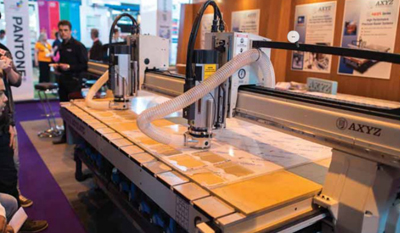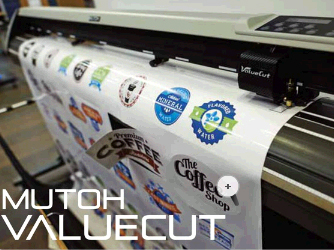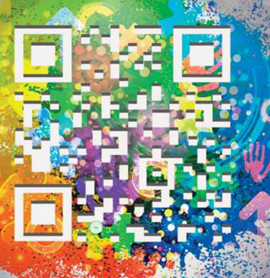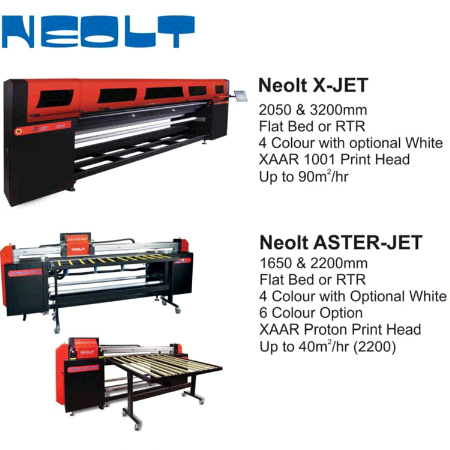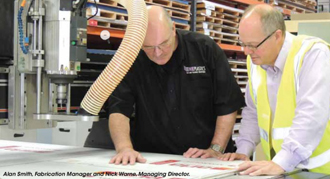Image Reports speaks to Ryan Fairweather, MD, Revolution Signs.
Features
What you need to know
Environmental consultant Clare Taylor brings you up to speed on environmental standards, systems and schemes.
This year has seen a number of new environmental initiatives, as well as changes to familiar standards, systems and schemes. They affect a wide range of activities: clothing and textiles, paper and packaging, management systems and reporting. Here are some of the most noteworthy.
What you get isn’t always what you see
Paul Schwartfeger and Simon Griffin from design firm Etre explain how you could be losing out by not optimising your website for the colour-blind.
Focus on finishing
Focus on finishing…and you know it’s likely you’ll significantly improve your margins. So where are the main advances taking place. Nessan Cleary investigates.
There’s been a development frenzy when it comes to cutting tables, but don’t expect the same level of activity elsewhere on the finishing kit front. So in some instances you’re going to continue to suffer from that production bottleneck until manufacturers put the same levels of R&D into other tools as they have into cutting technology. It’s easy to see why the focus has been on such devices – the demand for more automation has been almost palpable. And the developers have risen to the market’s expectation.
IR talks to... Bob Usher, Chairman of Picon
This summer Apex Digital Graphics managing director Bob Usher was elected chairman of Picon, the UK confederation of print industry manufacturers and suppliers. One of his aims is to broaden Picon’s membership, with a focus on attracting more companies from the digital and cross-media sectors.
Mutoh ValueCut
Nessan Cleary investigates how this cutting plotter handles a range of materials at high speeds.
Earlier this year Mutoh launched a new series of cutting plotters, known as ValueCut, which are essentially improved versions of the Kona series.
Will cross media save my business?
“Not a chance” according to print management specialist Graham Reed, a founding member of the Print Tribe, part ofglobal consultancy firm PrintFuture. Yet it does need careful consideration as he explains.
Hopefully the headline got your attention: it should. What really concerns me about ‘our’ industry is the emerging trend that when a new technology comes about that has even the remotest association with images on a substrate, it is going to be the saviour of the printing industry. Take Web-to-print (W2P); more than half of organisations that have bought W2P systems across the globe have not implemented them so that they bring a profitable outcome to their organisation. So why is cross media going to be any different?
Bridge over troubled waters
Can visual QR codes help print cross over into the digital world? Nevo Alva thinks so. He’s co-founder and CEO of Visualead, which aims to aid engagement between the offline consumer and the online brand via this latest QR development.
When the barcode, developed in 1952, was first used as a solution to standardise grocery shopping, label military supplies, and track packages and shipments, it was considered sophisticated technology. But it quite quickly came to be perceived as incredibly mundane and out-dated. Enter the QR code.
Hands On: Optimus MIS
Nessan Cleary talks to users about how this package has evolved from being financial management tool to a vital part of the production system for the modern wide-format operation.
Management information systems (MIS) have become increasingly important to print businesses, partly because there’s more emphasis on automated throughput than there was, but also because the role of the MIS has changed. Traditionally such systems have been all about gathering financial information so that managers can make the best decisions for the smooth running of a business. But increasingly the MIS now sits at the heart of the production process, running everything from estimating and quoting to generating delivery notes and invoices.
NE plastics - your secret service
If you’re looking for a sheet plastics distributor that can offer you a whole lot more, then you should be talking to Nick Warne and his team at NE Plastics. “Following our successful debut at FESPA in London, earlier this year, we have experienced a significant growth in sales; not only in our core business of flat sheet but also for our new roll media range and for trade fabrication work where good quality and fast turnaround is our mantra. “
The fabric of life
Textile printing is said to be one of the fastest growing areas in wide-format, but you do have to tailor the applications around the available materials?
There’s no doubt that digitally printed textiles is a huge and growing business. But this is partly because it is made up of several very distinct markets. The biggest of these is the garment sector, which itself can cover a huge range from high street fashion to the occasional promotional T-shirt. This includes printing to various materials from cotton to silk, which require specialist printers with inks suitable to these materials, and plenty of washing before the garment is ready to wear.
Textile transformation
According to InfoTrends’ ‘Transforming Textile Printing’ report published at the start of this year, the global textile industry is worth approximately $1 trillion. While the digital textile printing market is tiny in comparison to the entire textile industry, it is growing rapidly from a global perspective. So are you in on the action?



